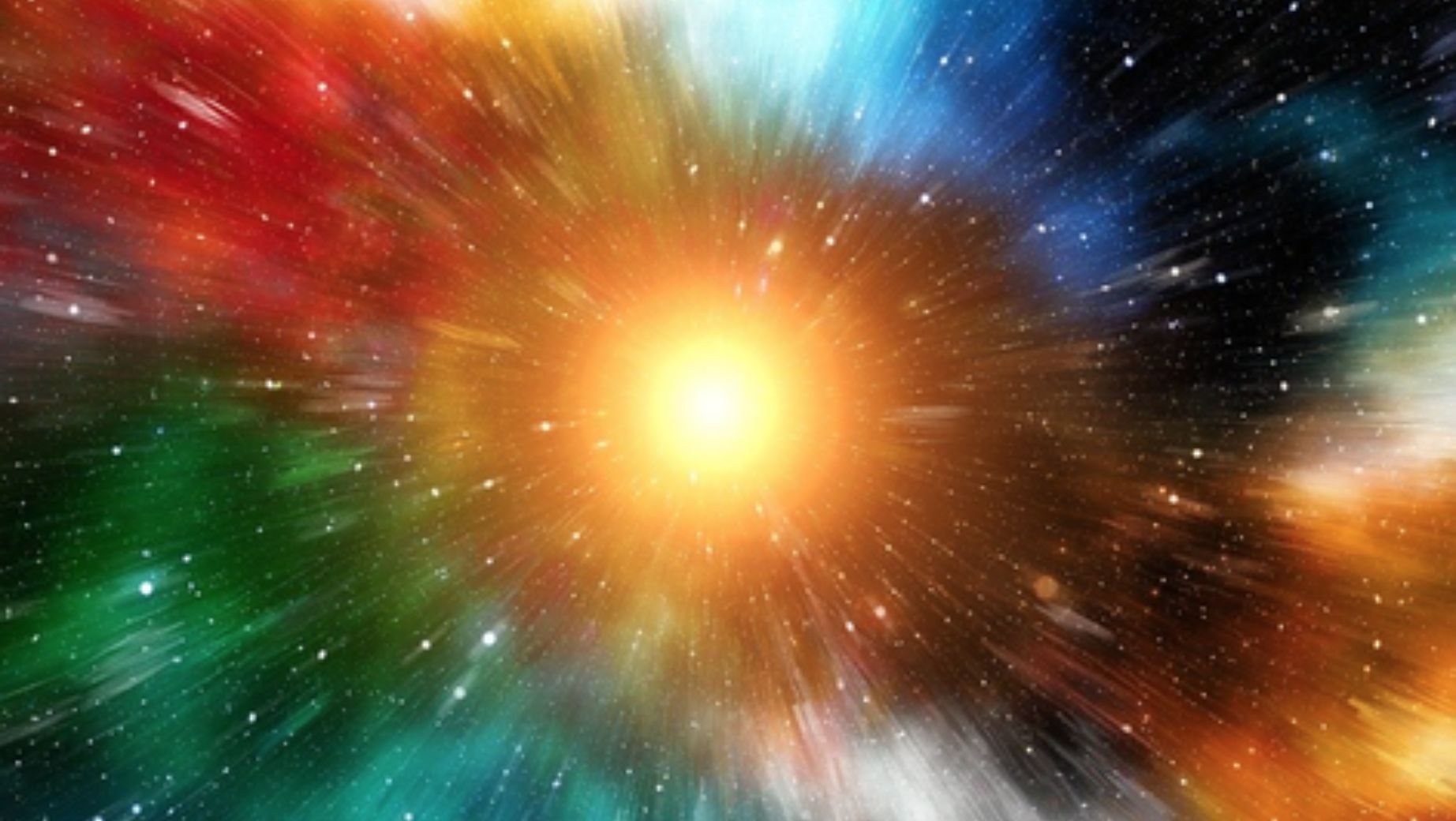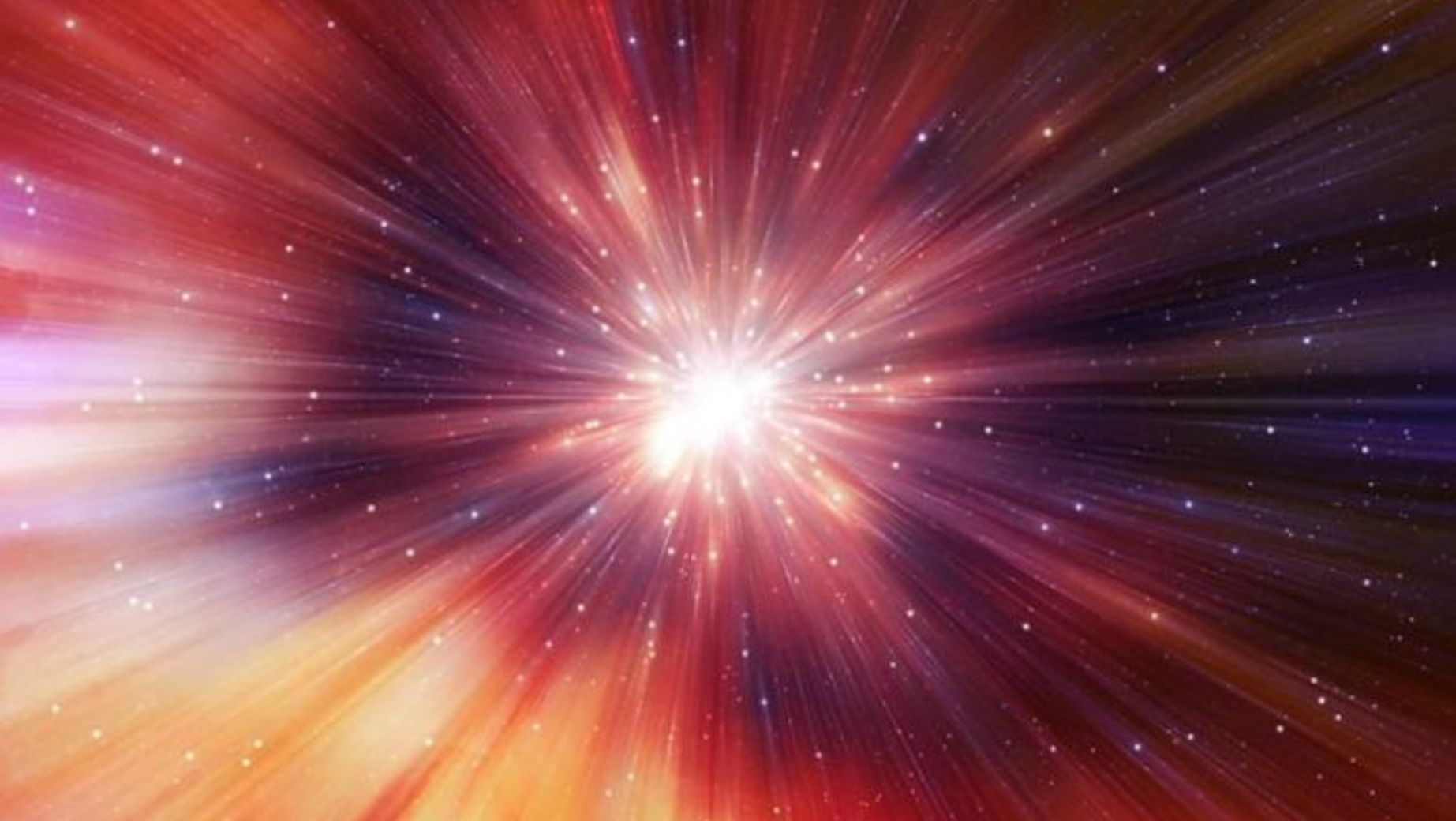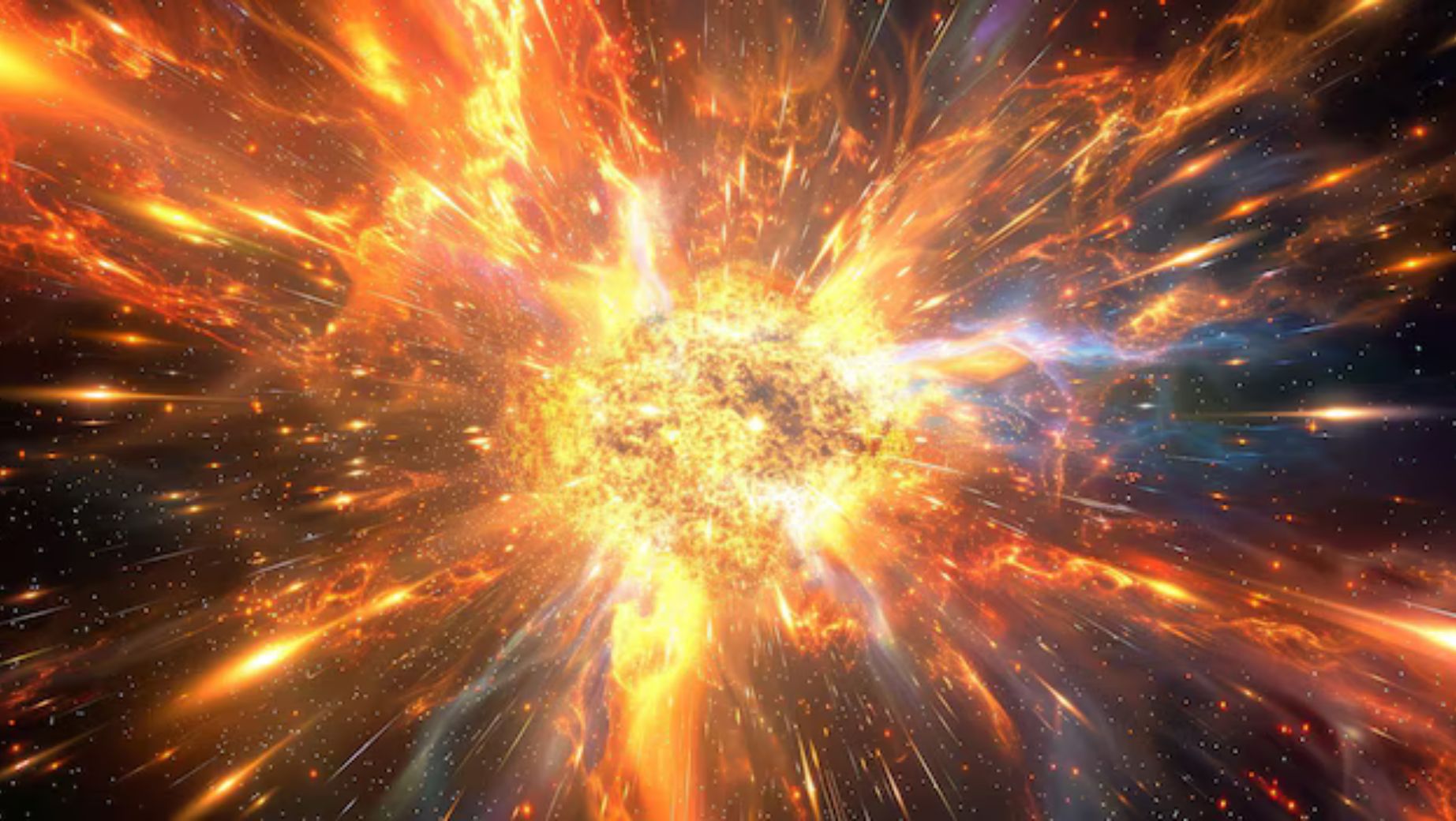The Big Bang is a captivating idea that explains how our universe began. Imagine everything we see today—stars, planets, and galaxies—starting from a single, incredibly hot and dense point. About 13.8 billion years ago, this point exploded, leading to the vast cosmos we know now. This theory isn’t just a story; it’s supported by strong scientific evidence. Understanding the Big Bang helps us grasp how the universe evolved over billions of years. It opens doors to exploring questions about existence and our place in the cosmos. So, let’s dive deeper into this extraordinary beginning of everything!
Historical Background: The Evolution of the Big Bang Theory

The Big Bang theory has a rich historical background, evolving through centuries of scientific thought. Ancient civilizations had various cosmological beliefs, often rooted in mythology. However, during the Renaissance, thinkers like Copernicus and Galileo began to challenge geocentric views, laying the groundwork for modern astronomy.
In the early 20th century, physicist Albert Einstein revolutionized our understanding of the universe with his theory of relativity. His work suggested that the universe could be expanding or contracting, contradicting the static universe model. In the 1920s, astronomer Edwin Hubble provided observational evidence for this expansion by discovering that distant galaxies were moving away from us.
Hubble’s findings led to the idea of a dynamic universe, paving the way for the Big Bang theory. In the 1940s, physicists George Gamow, Ralph Alpher, and Robert Herman formulated a detailed model, proposing that the universe began as a hot, dense state. This idea gained further support with the discovery of cosmic microwave background radiation in 1965, providing crucial evidence for the Big Bang. Over time, the theory has become a cornerstone of modern cosmology, fundamentally changing our understanding of the universe’s origins..
The Science Behind the Big Bang: Key Concepts
The Big Bang theory is built on several key concepts that help explain the universe’s origins. The first is the singularity, a point where all matter and energy were concentrated before the explosion. This singularity was incredibly hot and dense, leading to the rapid expansion that followed.
Next is the concept of expansion. After the Big Bang, the universe began to expand rapidly. This expansion is still happening today, as galaxies move away from each other. The rate of this expansion has been measured and continues to be a significant area of research.
Another crucial idea is cosmic inflation, which refers to a brief period of extremely rapid expansion just after the Big Bang. This inflationary period lasted only a fraction of a second but caused the universe to grow exponentially. It helped explain why the universe appears so uniform and isotropic on large scales.
Together, these concepts provide a framework for understanding how the universe evolved from a hot, dense state to the vast cosmos we observe today. They highlight the dynamic nature of our universe and set the stage for further exploration of its mysteries.
Evidence Supporting the Big Bang Theory
The Big Bang theory is supported by several key pieces of observational evidence. One of the most significant is cosmic microwave background radiation (CMB). This faint glow, discovered in 1965 by Arno Penzias and Robert Wilson, is the afterglow of the Big Bang. It fills the universe and provides a snapshot of the cosmos just 380,000 years after the event.
Another crucial piece of evidence is the redshift of galaxies. Edwin Hubble observed that distant galaxies are moving away from us, and their light is shifted toward the red end of the spectrum. This redshift indicates that the universe is expanding, which aligns with the predictions of the Big Bang theory.
Additionally, the abundance of light elements like hydrogen, helium, and lithium in the universe supports the theory. These elements were formed during the first few minutes after the Big Bang in a process called big bang nucleosynthesis.
Together, these observations create a compelling case for the Big Bang theory, helping scientists understand the universe’s early conditions and its ongoing evolution. Each piece of evidence reinforces the idea that the universe had a specific beginning and has been expanding ever since.
The Role of Cosmic Inflation
Cosmic inflation is a critical concept in understanding the Big Bang and the early universe’s rapid expansion. It refers to a brief period, just after the Big Bang, when the universe expanded exponentially. This expansion occurred in a tiny fraction of a second, increasing the universe’s size by a factor of at least 102610^{26}1026.
Inflation helps solve several puzzles about the universe. For instance, it explains why the universe is so homogeneous and isotropic on large scales. Without inflation, regions of space that are far apart wouldn’t have been in contact with each other, yet they have similar properties.
Inflation also accounts for the distribution of galaxies we observe today. Tiny quantum fluctuations during this rapid expansion were stretched across the universe, seeding the formation of galaxies and large-scale structures. These fluctuations eventually became the clumps of matter that grew into stars and galaxies.
Furthermore, cosmic inflation predicts the existence of gravitational waves, ripples in space-time that could provide additional evidence for the theory. Overall, cosmic inflation is essential for explaining the universe’s uniformity and structure, reinforcing the Big Bang model’s validity.
Formation of Matter: From Energy to Atoms

The formation of matter after the Big Bang is a fascinating process that transformed energy into the fundamental building blocks of the universe. In the moments following the Big Bang, the universe was incredibly hot and dense, consisting mainly of energy. According to Einstein’s equation E=mc2E=mc^2E=mc2, energy can convert into matter.
As the universe began to cool, high-energy photons started to collide, creating fundamental particles. These particles included quarks and electrons, which are the building blocks of atoms. Quarks combined to form protons and neutrons, while electrons orbited around them.
During the first few minutes, a process called big bang nucleosynthesis occurred. This led to the formation of light elements, primarily hydrogen and helium, along with trace amounts of lithium.
These elements became the foundation for all matter in the universe. Over time, as gravity pulled matter together, clouds of gas formed, leading to the creation of stars and galaxies. Thus, the transformation from energy to matter set the stage for the complex structures we see in the universe today.
The Birth of Stars and Galaxies
The birth of stars and galaxies is a pivotal chapter in the universe’s history, occurring after the initial expansion from the Big Bang. As the universe cooled and matter spread out, gravity began to play a crucial role. Over millions of years, tiny fluctuations in density caused regions of gas and dust to clump together.
These dense regions became the seeds for stars. When the temperature and pressure in these clumps increased, nuclear fusion began. This process transformed hydrogen into helium, releasing vast amounts of energy and creating the first stars.
The first stars, often called Population III stars, were massive and hot, emitting intense light. Their lifespans were relatively short, leading to spectacular supernova explosions. These explosions spread heavier elements throughout the universe, enriching the surrounding gas.
As gravity continued to work, these gas clouds began to collapse and merge, forming galaxies. Over time, interactions and collisions between these early galaxies contributed to the larger structures we observe today. Thus, the formation of stars and galaxies marked the beginning of a complex cosmic landscape, setting the stage for the universe’s evolution.
The Impact of Dark Matter and Dark Energy
Dark matter and dark energy are two of the most mysterious components of the universe, significantly influencing its evolution. Dark matter makes up about 27% of the universe’s mass-energy content. It does not emit, absorb, or reflect light, making it invisible and detectable only through its gravitational effects. Scientists infer its presence by observing how galaxies and galaxy clusters move.
Dark energy, on the other hand, accounts for about 68% of the universe. It is believed to be responsible for the accelerated expansion of the universe. This expansion was first observed in the late 1990s, when astronomers noticed that distant supernovae were fainter than expected. This observation suggested that the universe is not just expanding but doing so at an increasing rate.
The interplay between dark matter and dark energy shapes the large-scale structure of the cosmos. Dark matter helps galaxies form and cluster, while dark energy drives the universe’s expansion. Understanding these components is crucial for comprehending the universe’s fate and ultimate evolution. They are at the forefront of modern cosmological research, posing questions about the fundamental nature of reality.
Current Understanding and Ongoing Research
Current research on the Big Bang and the universe’s future is rapidly evolving. Scientists are using advanced telescopes and satellites to gather more data on cosmic phenomena. Observations of cosmic microwave background radiation continue to refine our understanding of the early universe. These studies help confirm aspects of the Big Bang theory and offer insights into its implications.
One major focus is the role of dark matter and dark energy. Researchers are investigating how these components influence the universe’s expansion and structure. New theories, such as the possibility of multiple universes, are gaining traction. These ideas challenge traditional notions of a singular universe.
Ongoing experiments, like those at CERN, are also pivotal. They attempt to recreate conditions similar to those just after the Big Bang. This research can lead to breakthroughs in understanding fundamental particles and forces.
As technology advances, our grasp of cosmic history and future possibilities will grow. Scientists are committed to uncovering the mysteries of the universe. Each discovery brings us closer to understanding how it all began and where it is heading. The journey of exploration continues, driven by curiosity and innovation.
Philosophical Implications: What Does the Big Bang Mean for Humanity?

The Big Bang theory raises profound philosophical questions about existence and the nature of the universe. First, it challenges our understanding of creation. If everything originated from a singular event, what does that say about our place in the cosmos? This perspective can evoke feelings of insignificance but also inspire a sense of wonder.
The theory suggests that the universe is constantly evolving. This notion prompts inquiries about the purpose and direction of this evolution. Are we mere observers in an indifferent universe, or does life hold a greater significance? Such questions can lead to existential contemplation.
Furthermore, the Big Bang invites reflections on time itself. Before the Big Bang, time as we know it did not exist. This challenges our perception of beginning and end, making us ponder whether the universe has a definitive start or will eventually cease to exist.
Lastly, the interconnectedness of all matter encourages a sense of unity. Understanding that we are composed of the same elements formed in the early universe can foster a collective identity. These philosophical implications compel us to examine not just the universe but our role within it, igniting curiosity and introspection about our existence.
Conclusion: The Big Bang
The Big Bang theory is a cornerstone of modern cosmology, offering profound insights into the universe’s origins. Understanding this event not only explains the formation of galaxies, stars, and planets but also illuminates the fundamental laws of physics. Its implications extend beyond science, influencing our philosophical outlook on existence and our place in the cosmos. As we continue to explore the mysteries of the universe, the Big Bang remains a pivotal point in our quest for knowledge. This ongoing investigation enriches humanity’s understanding of the cosmos, driving curiosity and inspiring future generations to seek answers to life’s biggest questions.
FAQs
What is the age of the universe according to the Big Bang theory?
Based on measurements of the cosmic microwave background radiation and the rate of expansion, the age of the universe is estimated to be about 13.8 billion years. This estimate helps scientists understand how long the universe has been evolving since the Big Bang.
How did the concept of the Big Bang get its name?
The term “Big Bang” was coined by British scientist Fred Hoyle during a radio broadcast in 1949. He used it somewhat derisively to describe the theory he did not support, favoring a steady-state model instead. The name stuck and is now widely accepted to describe the origin of the universe.
Are there competing theories to the Big Bang?
Yes, there are alternative theories, such as the steady-state theory and the cyclic model. The steady-state theory suggests that the universe has no beginning or end and continues to expand while new matter is created. The cyclic model proposes that the universe undergoes endless cycles of expansion and contraction. However, the Big Bang theory remains the most widely accepted explanation based on current evidence.
How does the Big Bang theory explain the uniformity of the universe?
The Big Bang theory accounts for the observed uniformity of the universe through the concept of cosmic inflation. This rapid expansion in the universe’s early moments helped to smooth out any irregularities, leading to the uniform distribution of galaxies we observe today.
What are the future implications of the Big Bang theory?
The Big Bang theory suggests that the universe will continue to expand indefinitely, leading to scenarios like the “Big Freeze” or “heat death,” where galaxies drift apart, and the universe cools down. Ongoing research into dark energy and other cosmic phenomena aims to understand how these processes will shape the universe’s ultimate fate.

